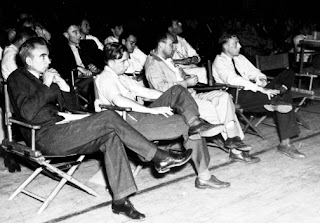Most viewed posts from 2010
At the end of 2009 I posted the most viewed posts on this blog. Here is the list from 2010. The number of pageviews are from Google Analytics and are an under-estimate. 1. Nature publishes 17 parameter fit to 20 data points 2,900 pageviews 2. There is no perfect Ph.D project 1,000 3. A Ph.D without scholarship ? 310 4. Breakdown of the Born-Oppenheimer approximation 300 5. Beware of curve fitting 280 6. OPV cell efficiency is an emergent property 230 7. Artificial photosynthesis 224 8. Want ad: measure for quantum frustration 180 9. 100 most influential living British scientists 176 10. Ph.D without knowledge 154





















